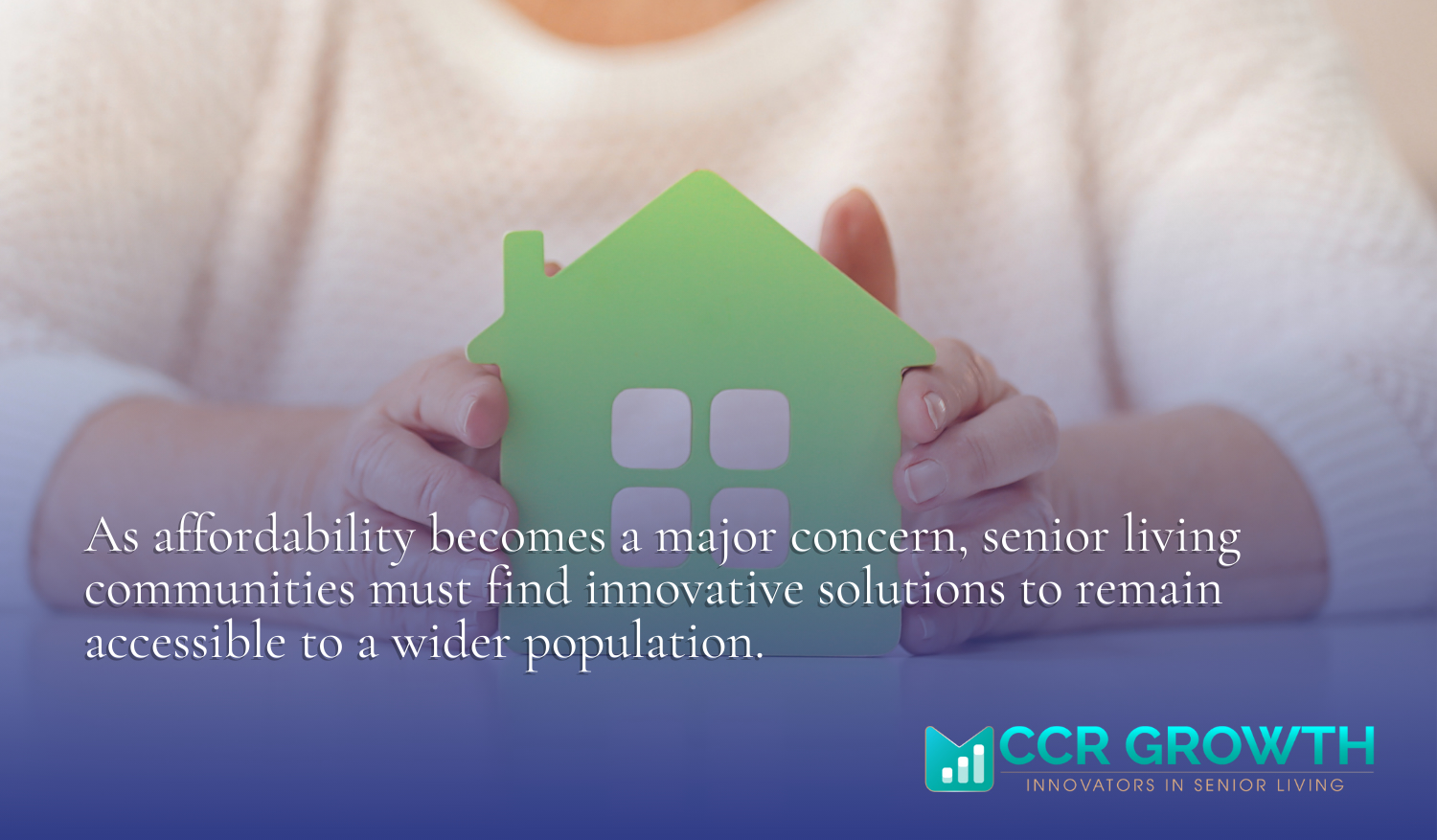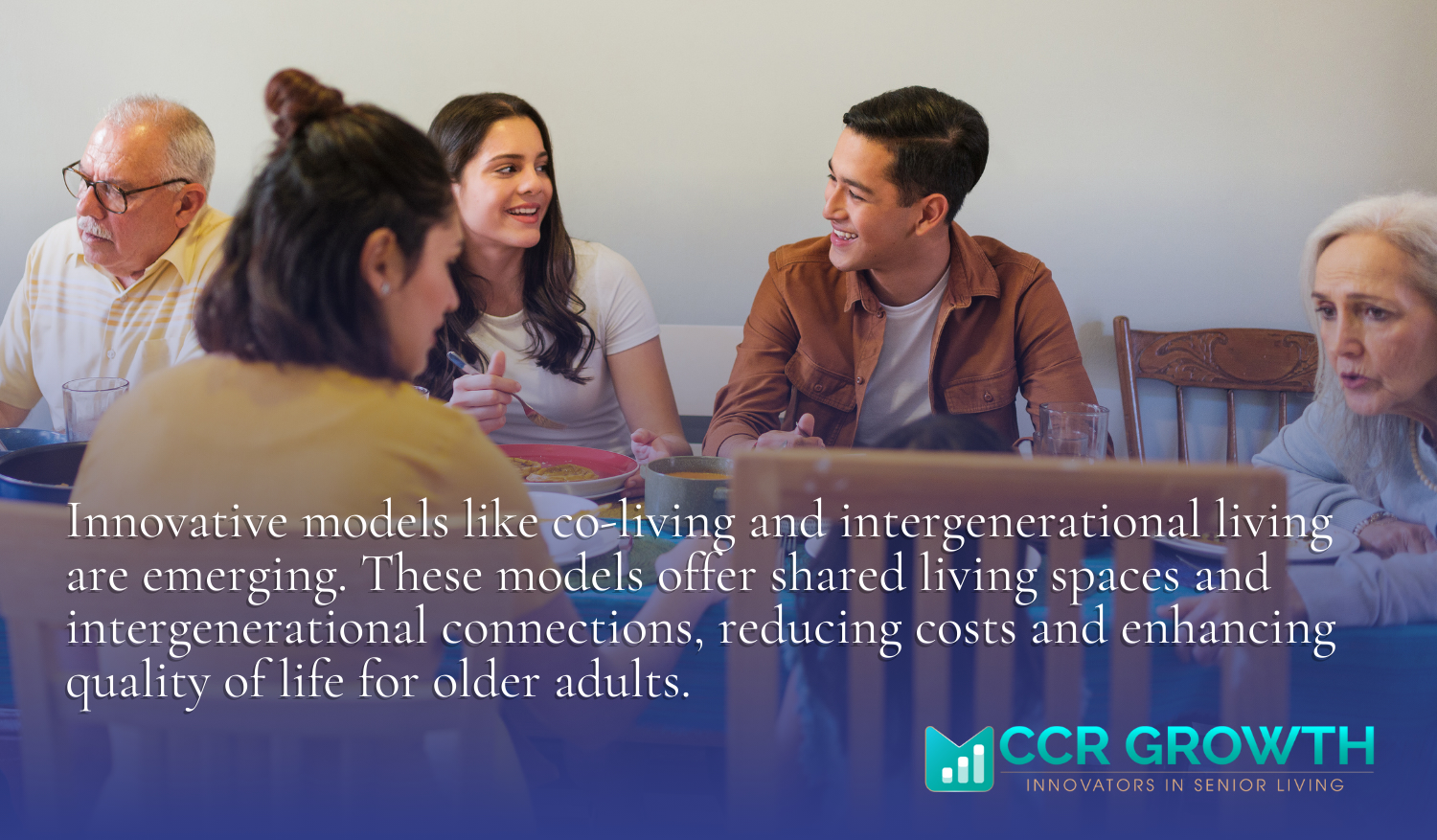
CCR Growth
How Communities are Ensuring Accessible and Affordable Senior Living
As our society experiences a significant demographic shift with the growing senior population, the demand for accessible and affordable senior living options is on track to reach an all-time high in the next few years. According to the U.S. Census Bureau, the number of Americans aged 65 and older is expected to nearly double by 2060, reaching 95 million. This trend underscores the urgent need to explore innovative financial solutions that make quality senior care a realistic option for people from all financial backgrounds. For senior living operators, ensuring affordability is not just a competitive advantage but an ethical imperative.
That said, let’s look at the ways senior living communities can adapt to financial diversity among residents, as well as strategies used across the industry to provide high-quality, financially accessible care.

Current Trends and Financial Challenges in Senior Living
The rising cost of senior living is a challenge with many different levels shaped by increased demand, inflation, and the rising costs of healthcare and amenities. The average cost of assisted living, for instance, was $5,350 per month in 2023, according to Genworth’s Annual Cost of Care Survey. For nursing home care, the costs can be significantly higher, averaging over $9,000 per month for a private room. Adjusting for inflation, we can reasonably expect these costs to see a steady increase in years to come.
This inflation in costs, combined with regional price variations, places significant pressure on middle- and lower-income seniors. Addressing these needs requires senior living communities to innovate their pricing structures, integrate financial assistance options, and explore alternative community models.
Financial Diversity in Senior Living Residents
Senior living communities often serve residents from vastly different financial backgrounds. Some residents come with substantial retirement savings, pensions, or other assets, while others rely heavily on Social Security or limited personal savings.
For the latter, affordability is especially critical. In fact, 3 in 10 older adults in the U.S. have incomes below 200% of the federal poverty level, according to the Kaiser Family Foundation. This reality will demand flexibility from senior living communities, which must balance the operational costs with payment options that accommodate residents with varied financial capacities.
How Senior Living Communities Address Affordability

The affordability question spells a potential crisis for a large part of the senior population in America, so how might operators and their communities work to circumvent this and make their services and housing options accessible?
Sliding Scale and Needs-Based Pricing
Some senior living operators use sliding scale or needs-based pricing to adjust fees based on the resident’s financial situation. This approach helps to ensure that those with lower incomes can access the same high-quality care as their more affluent peers.
Tiered Service Plans
Instead of a flat monthly rate covering all services, tiered plans allow residents to select only the services they need, which lowers overall monthly costs and makes senior living feasible for those on a tight budget.
Government and Non-Profit Assistance Programs
Federal, state, and non-profit organizations play an essential role in keeping senior living accessible for those who cannot afford private pay. A variety of government programs are available to support senior living, including:
Medicaid Waivers
Many states offer Medicaid waivers that help cover the cost of assisted living or in-home care for eligible seniors. While traditional Medicaid does not generally pay for assisted living, these waivers can provide vital assistance to those with limited resources.
HUD Programs
The U.S. Department of Housing and Urban Development (HUD) offers several programs that support affordable housing for seniors, including Section 202 Supportive Housing for the Elderly. This program provides rental assistance and funding for affordable housing, making it easier for low-income seniors to find affordable housing options that meet their needs.
Veterans Benefits
Veterans who qualify for the Department of Veterans Affairs’ (VA) Aid and Attendance benefit can receive additional funds that help pay for assisted living. This program provides critical financial support for those who have served in the military and face medical or personal care costs they cannot otherwise afford.
Innovative Community Models and Solutions

In response to the affordability challenges in senior living, some organizations have pioneered innovative community models that make senior housing accessible to a broader range of income levels.
Co-Living Models
Co-living senior communities offer a shared living arrangement, where residents can lower their costs by sharing common spaces, such as kitchens and living rooms, while still maintaining private bedrooms. This approach can drastically reduce living expenses and increase the sense of community among residents.
Intergenerational Living
Intergenerational living communities foster connections between people of different ages, often bringing together seniors and young adults or families. These communities can take various forms, from co-housing arrangements to shared living spaces. By sharing resources and responsibilities, residents can reduce living costs and enjoy the benefits of mutual support. For example, younger residents might assist with technology or home maintenance, while older residents could offer childcare or mentoring. This collaborative approach creates a vibrant and dynamic environment that benefits everyone involved, making senior living a more accessible and affordable option for older adults.
Wrap Up: Ensuring Affordability While Maintaining Quality in Senior Living
While senior living affordability remains a complex issue, there are numerous pathways to making it more attainable for seniors from varied financial backgrounds. Whether through innovative payment models, government assistance, or emerging community designs, senior living providers are constantly seeking ways to serve their communities better.
At CCR Growth, we specialize in helping senior living communities adapt to these evolving needs while scaling their growth. Our deep expertise in senior living marketing, sales, and operational support enables us to craft strategies that emphasize both accessibility and profitability. If you’re looking to grow your senior living community sustainably while keeping affordability front and center, get in touch with us today. Together, we can create solutions that work for every resident, every family, and every community.
For For more valuable insights, watch our podcast on “Effective Senior Living Sales Strategies to Overcome Objections“.
Subscribe to our newsletter
Sharpen your expertise and stay ahead of senior living industry trends—subscribe to CCR Growth’s newsletter for exclusive insights and updates.
Recent Posts



A Complete Guide to Generative Engine Optimization for Senior Living
Redefining Senior Living Marketing, Sales, and Operations
CONTACT ADDRESS
8710 Carmel Valley Road, Carmel, CA 93923
GENERAL INQUIRIES
info@ccrgrowth.com
(831) 273-3628
SOCIAL MEDIA




